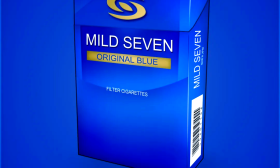The Ashen Aftertaste: Reclaiming Flavor After Smoking
For decades, the link between smoking and devastating health consequences like lung cancer and heart disease has been the primary focus of public health campaigns. Yet, for many individuals attempting to quit, a more immediate and personal loss is the gradual, insidious degradation of their sense of taste and smell. The question that often arises for former smokers, filled with a mix of hope and frustration, is whether the damage inflicted upon their taste buds is permanent, or if the vibrant world of flavor can be reclaimed.
The answer, much like the process of recovery itself, is complex and layered. It is not a simple "yes" or "no," but rather a nuanced "it depends, and the potential for significant improvement is high." To understand this, we must first delve into how smoking orchestrates this sensory theft.
The Assault on the Palate: How Smoking Damages Taste
Taste buds, those microscopic clusters of cells on the tongue, palate, and throat, are not the solitary heroes of flavor perception. They work in concert with our olfactory system (sense of smell) to create the rich tapestry of taste we experience. Smoking launches a multi-pronged attack on this delicate system.
-
Chemical Coating and Direct Damage: Cigarette smoke contains thousands of chemicals, including tar and toxic compounds like hydrogen cyanide and formaldehyde. These substances do not merely pass by the taste buds; they coat them. This creates a physical barrier that insulates the taste receptors from making full contact with food molecules. Imagine trying to appreciate the texture of silk while wearing thick leather gloves. Furthermore, the heat from the smoke can cause direct physical damage to the delicate structures of the taste buds themselves.
-
Impaired Olfactory Function: Perhaps the most significant impact is on the sense of smell. The majority of what we perceive as "flavor" is actually aroma. When we chew food, volatile compounds travel up the back of the throat to the olfactory epithelium, a patch of specialized sensory cells high in the nasal cavity. The toxic chemicals in smoke paralyze and eventually destroy these olfactory cells. Unlike taste buds, which regenerate approximately every 10-14 days, olfactory neurons have a limited regenerative capacity. Chronic smoking leads to a cumulative loss, dulling the ability to detect nuanced aromas, which in turn flattens the overall flavor profile of food.
-
Vascular Constriction and Reduced Blood Flow: Taste buds, like all living cells, require a constant supply of oxygen and nutrients delivered via a rich network of capillaries. Nicotine is a potent vasoconstrictor, meaning it causes blood vessels to narrow. This reduces blood flow to the tongue and olfactory epithelium, effectively starving the sensory cells of the resources they need to function optimally and regenerate properly.
-
Neurological Changes: Emerging research suggests that nicotine can interfere with the brain's ability to process taste signals. It may alter the neural pathways responsible for interpreting sweet, salty, sour, bitter, and umami sensations, leading to a distorted perception of taste.
The cumulative effect of these mechanisms is a condition often referred to as "smoker's palate." Individuals experience a general blunting of taste, often reporting that food tastes "ashen," "metallic," or simply bland. To compensate, they may heavily salt their food, add excessive sugar, or gravitate towards strongly flavored, often unhealthy, options.
The Path to Recovery: Reversing the Damage
The human body possesses a remarkable capacity for healing once a toxic insult is removed. Quitting smoking is the single most critical step in reversing taste bud damage. The timeline for recovery, however, is not instantaneous and varies from person to person, influenced by factors such as the duration and intensity of the smoking habit, genetic predisposition, and overall health.
The Immediate Aftermath (48-72 hours): Within just a few days of quitting, the body begins its repair work. The coating of tar and toxins starts to clear from the tongue and taste buds as saliva production normalizes (smoking can cause dry mouth). Many new quitters report a sudden, almost shocking, return of sensitivity, particularly to bitter and salty tastes. This can be a double-edged sword; while the rediscovery of flavor is encouraging, the heightened sensitivity can sometimes make food taste uncomfortably strong or even unpleasant initially.
Weeks to Months (1 week to 3 months): This period marks the most significant phase of recovery. As blood circulation improves, the starved taste buds and the supporting cells receive a fresh supply of oxygen and nutrients, boosting their regenerative cycle. The olfactory nerves also begin their slow and challenging process of healing. The ability to smell gradually returns, which dramatically enhances the complexity of flavor. Former smokers often describe this phase as "rediscovering" foods they had long forgotten, with fruits tasting sweeter and herbs more aromatic.
Long-Term Healing (3 months and beyond): For most people, the majority of taste recovery occurs within the first few months. However, continued improvement can be observed for up to a year or more. The body is not just repairing recent damage but addressing years of cumulative injury. The key factor here is the extent of the damage to the olfactory epithelium. If a significant number of olfactory neurons have been permanently destroyed, there may be a ceiling to full recovery. Nevertheless, the functional improvement is almost always substantial enough to transform the eating experience.
Can the Damage Be Permanent?
While the potential for recovery is excellent, it is crucial to acknowledge that in cases of extreme, long-term heavy smoking, some damage may be irreversible. If the basal stem cells responsible for regenerating olfactory neurons have been severely compromised, a complete restoration of the sense of smell may not be possible. Similarly, if smoking has led to chronic conditions like persistent gum disease or oral thrush (which is more common in smokers), these issues can continue to impair taste and require separate medical treatment.
Strategies to Aid and Accelerate Taste Bud Rehabilitation
Beyond simply quitting, individuals can actively support their sensory recovery:
- Practice Mindful Eating: Slow down and pay close attention to the flavors and textures of food. This helps retrain the brain to focus on subtle taste sensations.
- Maintain Excellent Oral Hygiene: Brush your tongue gently to remove dead cells and bacteria, and stay hydrated to ensure proper saliva flow.
- Experiment with New Flavors: Use a variety of herbs, spices, citrus, and aromatics to stimulate the recovering senses without relying on excessive salt or sugar.
- Ensure Adequate Nutrition: Deficiencies in certain nutrients, particularly zinc and vitamin B12, can impair taste function. A balanced diet supports overall cellular repair.
- Be Patient: Recovery is a journey, not a destination. There may be good days and bad days. The important thing is that the overall trajectory is positive.
In conclusion, the ashen aftertaste left by smoking is not necessarily a life sentence. The body's innate healing mechanisms are powerful, and for the vast majority of former smokers, the damage to taste buds and the sense of smell is largely reversible. The journey requires the courageous first step of quitting, followed by patience and a conscious effort to re-engage with the world of flavor. While the ghost of the habit may occasionally linger, the return of vibrant, nuanced taste stands as one of the most immediate and rewarding victories in the pursuit of a smoke-free life.













